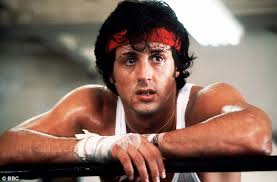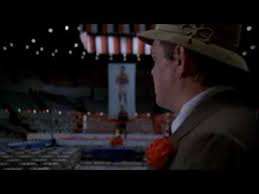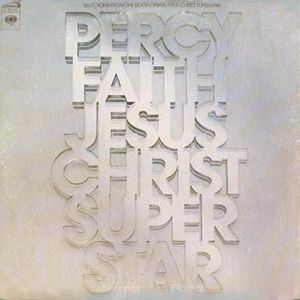I grew up in a very strict Catholic family. I started grade school in the 1960s and entered high school in the early 1970s. I was a good student, but the true reason I loved “back to school” time in September was it represented the “me time” I didn’t have at home.
My mom and dad had a simple definition for what being a “good girl” meant for my two sisters and me: Do what you are told.
In fairness to my parents, they didn’t try to tell us how to think; in fact they encouraged our intellectual curiosity. My dad, especially, loved moderating spirited debates around the dinner table. If our family had seen a movie or watched a TV show we thought was memorable, he’d stop at the library on his way home from the mill and check out several volumes on the topic. After we’d read them, he peppered us with questions about our points of view. It got so passionate one night that my sister raised her fork at me and I spilled my milk executing an impressive evasive maneuver.
My mom was a traditional homemaker. When we got home from school we would sit in the kitchen while she prepared dinner and describe our classes and what we learned. By the end of the school year, she knew our subjects, our classmates and our teachers as well as we did.
But as much as my parents loved having smart girls, they treasured having obedient girls. We wore the clothes my mom bought us. We went to the movies my dad and mom picked out. We played with the kids my parents allowed us to be with. We only went to the mall or the store when my parents did. We got our hair cut the way my mom wanted it to look. We ate the food my mom bought and cooked. We did what we were told.
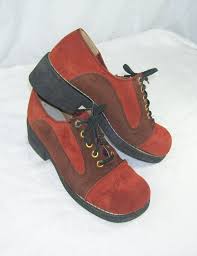 My one taste of independence was going to school. It started in late August when we would buy our “school” shoes for the year. Yep, we had one pair of shoes that we wore to school every day for the year. They joined our sole pairs of tennis shoes, winter boots and Sunday dress shoes in the closet. My parents allowed my sisters and me to pick out the shoes we wanted. Within reason, of course. I loved the chunky heeled, colored blocked suede platform shoes I chose for my sophomore year in high school so much, I made them last into my junior year.
My one taste of independence was going to school. It started in late August when we would buy our “school” shoes for the year. Yep, we had one pair of shoes that we wore to school every day for the year. They joined our sole pairs of tennis shoes, winter boots and Sunday dress shoes in the closet. My parents allowed my sisters and me to pick out the shoes we wanted. Within reason, of course. I loved the chunky heeled, colored blocked suede platform shoes I chose for my sophomore year in high school so much, I made them last into my junior year.
Since we attended Catholic school, we wore uniforms. Red and gray plaid wool jumpers in grade school; navy blue 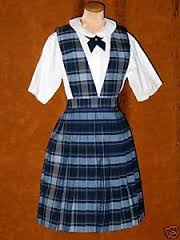 polyester jumpers in high school. The wool jumpers were sturdy, but they were uncomfortably hot. After four years, our high school jumpers got that cheap synthetic fiber shine from wear and tear. Since I wore my older sister’s hand-me-down uniform, the fabric was verging on transparent in spots by the time I graduated. My lucky little sister got a brand new uniform when she entered high school.
polyester jumpers in high school. The wool jumpers were sturdy, but they were uncomfortably hot. After four years, our high school jumpers got that cheap synthetic fiber shine from wear and tear. Since I wore my older sister’s hand-me-down uniform, the fabric was verging on transparent in spots by the time I graduated. My lucky little sister got a brand new uniform when she entered high school.
Since we didn’t get to pick out new clothes for school, our originality went into the selection of knee socks we wore. As stringent as our schools’ dress codes were, they never dictated any thing regarding boys’ ties or girls’ knee socks. But, hey, it was the 1970s and my freewheeling hidden inner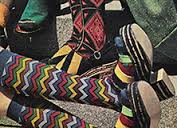 hippie emerged in my selection of crazy patterned knee socks. Stripes, dots, paisley, crochet, primary colors, nothing was off limits. Those doyennes of fashion, Marcia and Jan Brady, were knee sock nerds compared to me.
hippie emerged in my selection of crazy patterned knee socks. Stripes, dots, paisley, crochet, primary colors, nothing was off limits. Those doyennes of fashion, Marcia and Jan Brady, were knee sock nerds compared to me.
Our next stop in school preparation was the annual trip to the Ben Franklin 5-and-10 store 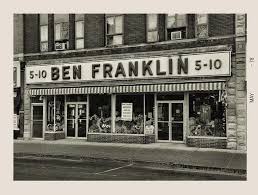 for school supplies. My mom let us roam up and down the aisles picking out binders, notepads, pens, protractors and pencil sharpeners of any shape, color or design we wanted. We also got to purchase the ever important book bag. The book bag was like a little briefcase, and made me feel very grown up and responsible when I carried it. The overflow of purses, totes, hobos and clutches I have in my closet today testifies to the joy I had selecting and sporting a
for school supplies. My mom let us roam up and down the aisles picking out binders, notepads, pens, protractors and pencil sharpeners of any shape, color or design we wanted. We also got to purchase the ever important book bag. The book bag was like a little briefcase, and made me feel very grown up and responsible when I carried it. The overflow of purses, totes, hobos and clutches I have in my closet today testifies to the joy I had selecting and sporting a new book bag every year. It wasn’t until I got to high school that the book bag was retired. By then, it was “cool” to carry your books and binders in your arms. The more they got rained on or snowed on the cooler it was. The ever present backpacks in use by students today were not even on the radar back then.
new book bag every year. It wasn’t until I got to high school that the book bag was retired. By then, it was “cool” to carry your books and binders in your arms. The more they got rained on or snowed on the cooler it was. The ever present backpacks in use by students today were not even on the radar back then.
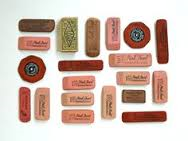 I loved the freedom of choice we had in selecting school supplies each year. No detail was too small for me to obsess over – do I get the round eraser with the brush? The soft, gummy eraser that didn’t tear paper? The trusty pink Eberhard Faber rectangle wedge? Decisions, decisions. Each choice I made, each item I selected started to teach me that I had my own taste and style. If I could trust myself to pick out an eraser, I could surely trust myself to buy a car some day, right?
I loved the freedom of choice we had in selecting school supplies each year. No detail was too small for me to obsess over – do I get the round eraser with the brush? The soft, gummy eraser that didn’t tear paper? The trusty pink Eberhard Faber rectangle wedge? Decisions, decisions. Each choice I made, each item I selected started to teach me that I had my own taste and style. If I could trust myself to pick out an eraser, I could surely trust myself to buy a car some day, right?
Speaking of transportation, getting to school was also a test of  independence. When I went to kindergarten and first grade I was able to walk to school. Back then, most families had only one car, and typically the husband took the car to work. If my mom had to leave the house while my dad was at the mill, she took the bus. My family moved to a new house the summer before second grade. Starting that September, I had to take a bus to and from school. I would have to get on a big yellow conveyance – alone – and sit among strange kids just to get to school. And, deep breath, do it all over again to come home. I was in a panic.
independence. When I went to kindergarten and first grade I was able to walk to school. Back then, most families had only one car, and typically the husband took the car to work. If my mom had to leave the house while my dad was at the mill, she took the bus. My family moved to a new house the summer before second grade. Starting that September, I had to take a bus to and from school. I would have to get on a big yellow conveyance – alone – and sit among strange kids just to get to school. And, deep breath, do it all over again to come home. I was in a panic.
That first month or so was terrifying. But I learned very quickly 1) to be at the school bus stop on time, 2) to know which bus number was my route and 3) to make strangers into friends.
I also learned not to leave anything on the bus or forget anything at home. Aside from not having a car, my mom also had my three-year-old sister at home. If I forgot homework, my gloves, or my lunch, it was my problem and I had to deal with it. And I loved that.
Here I was, this determined little second grader reveling in being on her own. I didn’t have a cell phone to call home for guidance. My parents weren’t coming to my rescue. I had to think, act and speak for myself. Instead of doing what I was told, I learned to do what was wise. What was smart. What was right. I carried my common sense around as proudly as I carried my new book bag.
With each new school year, new choices and new challenges taught me more and more 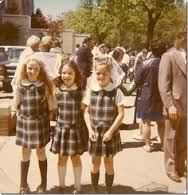 about myself. In eighth grade, I began telling my mom how I wanted my hair cut. By high school, I grew confident enough to ride the city bus so I could participate in after school activities and not worry about a ride home. The belief that I should be shy (good little Catholic girls weren’t forward or bossy!) was replaced by the knowledge that I wasn’t shy. I had a mind and a voice. And as so many other women and girls were learning in the 1970s, it was OK to use them.
about myself. In eighth grade, I began telling my mom how I wanted my hair cut. By high school, I grew confident enough to ride the city bus so I could participate in after school activities and not worry about a ride home. The belief that I should be shy (good little Catholic girls weren’t forward or bossy!) was replaced by the knowledge that I wasn’t shy. I had a mind and a voice. And as so many other women and girls were learning in the 1970s, it was OK to use them.
By the time I graduated from high school, my teachers trusted me, my parents trusted me, and I trusted me. As I held my diploma close on graduation night, my heart was already racing with questions about college. What would I study? Who would I know? What would I wear? The good news was I didn’t panic. After 12 years of school, I had already earned my degree of independence.
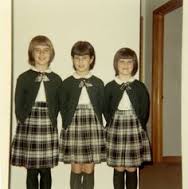
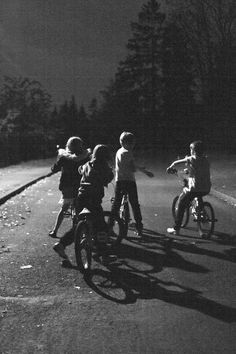
 Mr. Shakespeare gets the “glorious” adjective right though. Boy were the summers glorious. As we slowly emerged from our winter hibernations, we rediscovered our neighbors and our street, which, to me at least, was the center of my universe in my adolescence.
Mr. Shakespeare gets the “glorious” adjective right though. Boy were the summers glorious. As we slowly emerged from our winter hibernations, we rediscovered our neighbors and our street, which, to me at least, was the center of my universe in my adolescence.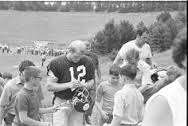 trip to the Pittsburgh Steeler training camp at St. Vincent’s College and Seminary in Latrobe, Pennsylvania. My dad would time it perfectly so he’d be there to see the “Oklahoma drills’ which tested rookie linemen against the veterans. He swore he knew Mike Webster and Jack Lambert would be Hall of Famers the moment he witnessed the drills at their rookie camp. I’ll never figure out why Steeler coach Chuck Noll just didn’t put dad on the payroll.
trip to the Pittsburgh Steeler training camp at St. Vincent’s College and Seminary in Latrobe, Pennsylvania. My dad would time it perfectly so he’d be there to see the “Oklahoma drills’ which tested rookie linemen against the veterans. He swore he knew Mike Webster and Jack Lambert would be Hall of Famers the moment he witnessed the drills at their rookie camp. I’ll never figure out why Steeler coach Chuck Noll just didn’t put dad on the payroll. Mostly, though, our front porch replaced the kitchen (and TV) as the center of our home. My sisters and I played Barbies there. We read books sitting on the metal glider with the plastic pillows that stuck to our sweaty legs. We took long midday naps and sat on the front steps watching our neighbors come and go.
Mostly, though, our front porch replaced the kitchen (and TV) as the center of our home. My sisters and I played Barbies there. We read books sitting on the metal glider with the plastic pillows that stuck to our sweaty legs. We took long midday naps and sat on the front steps watching our neighbors come and go. On Saturday nights, after we’d had our baths, my mom would treat us to ice cream floats. Don’t judge, but it’s a particular delicacy in Western Pennsylvania to make your float with Pepsi, not root beer. I can still remember the scent of Dial soap, baby powder, and vanilla ice cream perfuming the air. If my dad wasn’t working a night turn at the mill, he’d get his float in the biggest glass we had, a chunky, heavy mug. That mug remains in my mom’s kitchen 40+ years later. We still refer to it as “daddy’s glass.”
On Saturday nights, after we’d had our baths, my mom would treat us to ice cream floats. Don’t judge, but it’s a particular delicacy in Western Pennsylvania to make your float with Pepsi, not root beer. I can still remember the scent of Dial soap, baby powder, and vanilla ice cream perfuming the air. If my dad wasn’t working a night turn at the mill, he’d get his float in the biggest glass we had, a chunky, heavy mug. That mug remains in my mom’s kitchen 40+ years later. We still refer to it as “daddy’s glass.”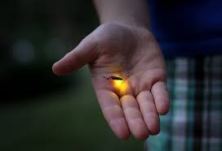 I would compete to see who could catch the most. My mom gave us old jelly jars to keep them in captivity. Uh, that didn’t go well. I’m ashamed to confess that my sister and I both tortured these poor insects mercilessly. We’d put them in water to see if they could swim. (They can’t.) We’d “race” them across the porch where they invariably got stepped on. We even went so far as to see if we could transplant the light from a bigger bug to a smaller one. (You can’t.) I guess the darkness of the summer night brought out the darkness in our souls too.
I would compete to see who could catch the most. My mom gave us old jelly jars to keep them in captivity. Uh, that didn’t go well. I’m ashamed to confess that my sister and I both tortured these poor insects mercilessly. We’d put them in water to see if they could swim. (They can’t.) We’d “race” them across the porch where they invariably got stepped on. We even went so far as to see if we could transplant the light from a bigger bug to a smaller one. (You can’t.) I guess the darkness of the summer night brought out the darkness in our souls too.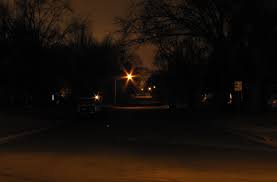 Too bad William Shakespeare didn’t live on my street. Romeo and Juliet couldn’t hold a candle to lightning bugs and ice cream floats.
Too bad William Shakespeare didn’t live on my street. Romeo and Juliet couldn’t hold a candle to lightning bugs and ice cream floats.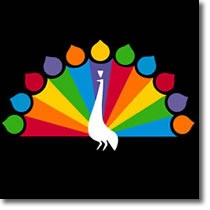
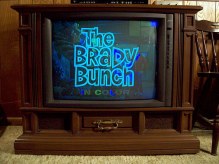 Then, in 1973, we got our very first color TV. A big Zenith console.
Then, in 1973, we got our very first color TV. A big Zenith console.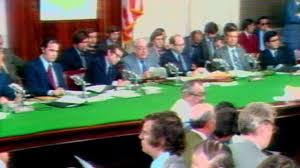 My very first memory of our first color TV was the green cloth covering the table where Senator Sam Ervin held court in the trial to impeach President Nixon.
My very first memory of our first color TV was the green cloth covering the table where Senator Sam Ervin held court in the trial to impeach President Nixon.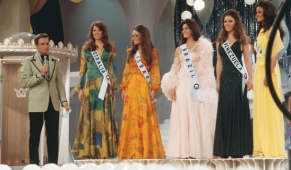 We even got to watch the Miss Universe pageant in color. We dropped Margie Fritz as our supplier of color commentary in a heartbeat.
We even got to watch the Miss Universe pageant in color. We dropped Margie Fritz as our supplier of color commentary in a heartbeat.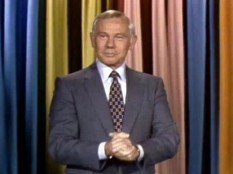 There were two shows, though, that we just had to experience in color. The first was The Tonight Show. Yes, my mom let us stay up late – even on school nights – to watch Johnny Carson. At first it started so we could welcome my dad home after the 3 pm to 11 pm turn at the mill. Pretty soon, she couldn’t pry us away from Johnny, Ed, Doc and the gang. We were absolutely astonished the first night we watched Johnny emerge from the curtain to do his monologue. It was a revelation. The curtain was a Technicolor dream. A glamorous rainbow. We talked about it for days. We had never imagined how wonderful that curtain was when we watched in black and white.
There were two shows, though, that we just had to experience in color. The first was The Tonight Show. Yes, my mom let us stay up late – even on school nights – to watch Johnny Carson. At first it started so we could welcome my dad home after the 3 pm to 11 pm turn at the mill. Pretty soon, she couldn’t pry us away from Johnny, Ed, Doc and the gang. We were absolutely astonished the first night we watched Johnny emerge from the curtain to do his monologue. It was a revelation. The curtain was a Technicolor dream. A glamorous rainbow. We talked about it for days. We had never imagined how wonderful that curtain was when we watched in black and white.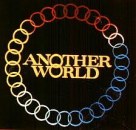 Once the Watergate hearings ended, the networks returned to their regular programming. The soap operas were back. We could barely contain ourselves the first afternoon we watched Another World! Steven Frame. Alice Matthews. Rachel Davis. The juiciest love triangle on afternoon television. And here they were. In color.
Once the Watergate hearings ended, the networks returned to their regular programming. The soap operas were back. We could barely contain ourselves the first afternoon we watched Another World! Steven Frame. Alice Matthews. Rachel Davis. The juiciest love triangle on afternoon television. And here they were. In color.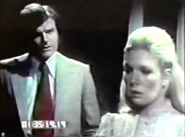 I was Team Alice all the way. With her long blond hair, frosted pink lipstick and super stylish blue eyeshadow, she was the embodiment of the all American girl. She was engaged to the resident hunk, and millionaire business man, Steven Frame.
I was Team Alice all the way. With her long blond hair, frosted pink lipstick and super stylish blue eyeshadow, she was the embodiment of the all American girl. She was engaged to the resident hunk, and millionaire business man, Steven Frame.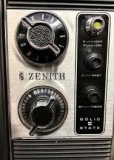 shows we would watch. Some nights it was a tug-of-war. Whoever was closest to the TV had to turn the dial to change the channel. My little sister figured out pretty quickly that being the one who changed the channel also meant being the one who picked the channel to watch. Somehow she always took the prime position next to the control panel.
shows we would watch. Some nights it was a tug-of-war. Whoever was closest to the TV had to turn the dial to change the channel. My little sister figured out pretty quickly that being the one who changed the channel also meant being the one who picked the channel to watch. Somehow she always took the prime position next to the control panel.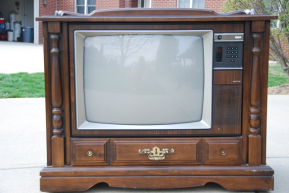

 My favorite scene in the film. Perhaps the last time we saw Stallone underplay a scene until Creed.
My favorite scene in the film. Perhaps the last time we saw Stallone underplay a scene until Creed. The street where Rocky lives. He may have been from Philadelphia, but his story echoed with working class folks in the western part of Pennsylvania too.
The street where Rocky lives. He may have been from Philadelphia, but his story echoed with working class folks in the western part of Pennsylvania too. The Rocky who won our hearts, before faux tan, hair mousse and plastic surgery turned him into robotic imitation.
The Rocky who won our hearts, before faux tan, hair mousse and plastic surgery turned him into robotic imitation.

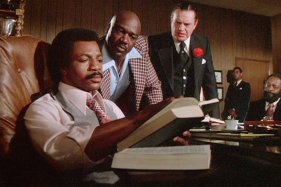


 a staple in movies, it’s hard to remember how fresh it was in Rocky. So many post-Rocky “underdog” films have copied it (including Avildsen’s own Karate Kid) that you can’t believe it was never a cliché.
a staple in movies, it’s hard to remember how fresh it was in Rocky. So many post-Rocky “underdog” films have copied it (including Avildsen’s own Karate Kid) that you can’t believe it was never a cliché.
